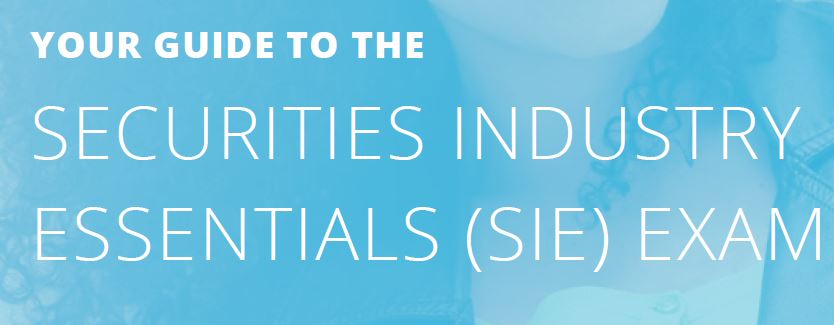How to Get Your Series 7 License

What is a Series 7 license? Known as the General Securities Registered Representative license, this license allows you to sell a broad range of securities. A holder is allowed to sell corporate stocks and bonds, municipal bonds, mutual funds, variable annuities, options, direct participation program (DPP) partnerships, and packaged securities (i.e., collateralized mortgage obligations).
The Series 7 is generally preferred by banks and broker dealers for new recruits coming directly into the financial services industry. Those who get this license are officially listed as registered representatives by FINRA, but are more commonly referred to as stockbrokers.
Steps to Earn Series 7 License
Below are the four steps to earning your Series 7 License.
Step 1: Take and Pass the SIE Exam
The SIE exam tests common topics such as fundamentals, regulatory agencies and their functions, product knowledge, and acceptable and unacceptable practices. You can take the SIE exam before being sponsored by a firm and even while you are still in school. You have a four-year window in which to take and pass any of the representative level top-off exams, like Series 7, after passing the SIE exam. Note that FINRA says that the SIE and Series 7 exams are "corequisites," which does not mean you have to take them at the same time. What FINRA means is that you have to pass both to get your license, but you can take them in any order.
Download "A Candidate's Guide to the SIE Exam" to take your first step toward SIE Exam success.
Step 2: Secure a Sponsorship
To take the Series 7 exam, you must be sponsored by a FINRA member firm or a self-regulatory organization (SRO). Firms apply for candidates to take the exam by filing a Uniform Application for Security Industry Registration or Transfer (Form U4). There is also an exam fee that is commonly covered by the sponsoring firm.
A recent College for Financial Planning report indicated 84% of financial professionals training related to practical soft skills, such as how to market yourself and communicate with clients as important as they develop their careers.*
Step 3: Study for the Series 7 Exam
Once you secure your sponsorship, you can take the top-off exam for the Series 7 license. Most candidates also choose to take the SIE before they take the Series 7, but you can take it first if you prefer and the SIE afterwards.
The licensing exam is not exactly a walk in the park. You need to study with purpose and planning. To help you out, many retail brokerage firms have an in-house training program or, in some cases, they have an agreement with an external training provider. Series 7 study materials go a long way toward helping you pass your Series 7 exam the first time.
Series 7 Exam Format
The exam consists of 125 multiple-choice questions, and you have 3 hours and 45 minutes to complete it.
The following table shows the major job functions covered by the exam (1 through 4) with the associated number of questions:
| Function Description | % of Exam | # of Questions |
| 1 - Seeks Business for the Broker Dealer from Customers and Potential Customers | 7% | 9 |
| 2 - Opens Accounts after Obtaining and Evaluating Customers' Financial Profile and Investment Objectives | 9% | 11 |
| 3 - Provides Customers with Information About Investments, Makes Suitable Recommendations, Transfers Assets and Maintains Appropriate Records | 73% | 91 |
| 4 - Obtains and Verifies Customers’ Purchase and Sales Instructions and Agreements; Processes, Completes and Confirms Transactions | 11% | 14 |
| TOTAL | 100% | 125 |
Step 4: Pass the Series 7 Exam
FINRA makes it easy to enroll for your exams, because they also administer the exams for your NASAA licenses. Simply visit this page.
The passing score for the exam is 72%. For more in-depth coverage of these functions and how the exam is set up, check out this article. Once you pass the exam, you have your license.
Ready to Start Preparing for the Series 7 Exam?
Series 7 licensing exam prep can really give you the edge you need to pass. Learn more about our live and online study options, and how to purchase a Series 7 exam prep.
----
*This is one of the findings of a quantitative survey conducted by the College for Financial Planning®—a Kaplan Company between June 27 and August 7, 2023. For this survey, a sample of 951 2022 and 2023 graduates of the College for Financial Planning was interviewed online in English.
Free Download:A Candidate's Complete Guide to the SIE Exam
After identifying nine series exams with common content (6, 7, 22, 57, 79, 82, 86/87, 99), FINRA decided to restructure their licensing process. The common content is now tested in the new Securities Industry Essentials (SIE) exam. Download this free guide to learn more about how the new securities licensing process works, the rationale for the change, SIE tested exam content, and how it could change hiring and recruiting practices.



